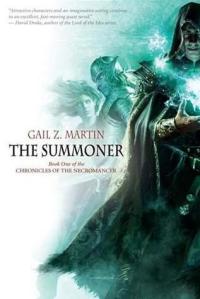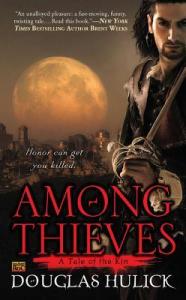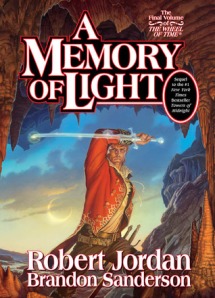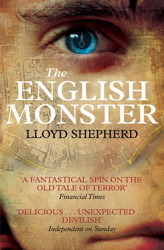Archive for the ‘Reviews in English’ Category
- In: Fantasy
- 6 Comments
I just finished reading this and, as what usually happens with a good book, right now I am feeling a little bit lost, as if I just parted with my best friends. Sigh.
The Tawny Man (TTM) is the third trilogy by Robin Hobb, the first being The Farseer Trilogy (TFT), the second The Liveship Traders (TLT). It returns to the story of FitzChivalry Farseer, the bastard prince of the Six Duchies kingdom, picking it up fifteen years after the end of TFT, building on conflicts and themes hinted in the previous trilogy.
The first book, Fool’s Errand, deals mainly with the theme of Old Blood or the Witted, the people who can communicate and bond with animals, and have long been persecuted by other people who regard this ability as dirty magic. Fitz himself is Witted, bonded to the wolf Nighteyes, which is one of the reasons he went into fifteen years of self-imposed isolation. But now a faction of this people, who styled themselves as the Piebalds, are planning to fight back, and they are somehow involved with the disappearance of Prince Dutiful. So Fitz must come out of hiding and find the prince and bring him back to the Buckkeep Palace, in time for his betrothal to a princess from the Out Islands.
The Golden Fool revolves around the intrigues and mysteries brought about by this betrothal, between Prince Dutiful and Elianna of the Outlislanders (the hated enemy in TFT), whose marriage is arranged to bring peace between the two peoples. The characters and story line from TLT also make their appearance, proposing an alliance between the liveship traders of Bingtown and the Six Duchies, for the sake of the dragon Tintaglia. The story becomes more and more complicated as Fitz has to juggle his relationship with all the people that come and go in his life.
In Fool’s Fate, Fitz accompanies the Prince to the Out Islands to fulfill a challenge proposed by Elliana, before she would accept Dutiful as her husband–slay the dragon Icefyre. Behind the challenge, stands the mastermind of all attacks against Buckkeep–the Pale Woman. In the end, Fitz must choose between his friend and his duty.
The title of the trilogy itself refers to the enigmatic character known as the Fool. In TFT he was King Shrewd’s Fool, who always seemed to look out for Fitz and gave him cryptic prophecies and finally became one of his best friends. Now he appears again as the tawny-skinned Lord Golden. As the friendship between him and Fitz deepens, so does the mystery that surrounds him.
As with the first two trilogies, the reason I fell in love with this story is the characters and the relationships between them. Good novels always have good characters, but what amazes me about Robin Hobb’s books is how she can create such a different relationship between different pairs of people, each one formed by the unique experiences that they share. There are many people who love and are loved by Fitz, but the great thing is, you can always see the difference between, for instance, his friendship with Nighteyes and the Fool, or between his respect for his two mentors Chade and Burrich, for Kettricken and Verity, or between his relationship with his three children Nettle and Dutiful and Hap, or his fondness for Thick and Lady Patience. They are all completely different from one another. It is not just the characters are great and real and believable and all that, but they have histories together, and I hang on to every word to find out what their futures are.
Another good thing that comes out of this is that each character creates its own little subplots so you get a myriad of plot threads weaving in and out of the story, forming a wonderful tapestry of great storytelling. It is just brilliant.I hope I can soon find other books that are as good as these.
The Summoner – Gail Z. Martin
Posted on: 31 Maret 2013
- In: Fantasy
- 2 Comments
 After reading a non-traditional fantasy in Among Thieves, I was ready for an old-fashioned one. The opening chapters of The Summoner showed some promise. A prince with undeveloped magical abilities was forced to flee from his home because his evil brother killed the rest of his family and seized the throne. I expected to read exciting adventures as the prince journeyed to a neighboring country and learned magic.
After reading a non-traditional fantasy in Among Thieves, I was ready for an old-fashioned one. The opening chapters of The Summoner showed some promise. A prince with undeveloped magical abilities was forced to flee from his home because his evil brother killed the rest of his family and seized the throne. I expected to read exciting adventures as the prince journeyed to a neighboring country and learned magic.
Well, he did experience some adventure with a ghost inn, a caravan, slavers, a haunted library, a warrior princess, but none of them was interesting.
He did learn about magic, but the description of how he learned was so vague that it didn’t give me anything to get excited about. In fact, everything related to magic in this novel was vague; I don’t understand why soldiers dislike and fear mages, why teleporting is limited to short distances, why certain things are forbidden in magic, other than because the author says so.
In addition, the characterization was very two dimensional. Such a pity. I was expecting great things, but now I don’t think I’ll continue reading the series.
Among Thieves – Douglas Hulick
Posted on: 16 Maret 2013
 After reading some fantasy series where the protagonists are thieves or characters other than farmboys or nobility and quite enjoying them, I turned next to Among Thieves. This time the main character Drothe is a Nose, which is some kind of an informant for crimelords in a community of thieves called the Kin.
After reading some fantasy series where the protagonists are thieves or characters other than farmboys or nobility and quite enjoying them, I turned next to Among Thieves. This time the main character Drothe is a Nose, which is some kind of an informant for crimelords in a community of thieves called the Kin.
The story starts with a missing artifact, with mysterious clues that include an enigmatic name, a cryptic script that may or may not be a code, and a puzzling rare pilgrim token. As Drothe investigates these clues, even stranger things happen, with a mystifying book, perplexing attempted murders, shadowy Grey Princes, an odd falsified letter, magical items. In between you also get fencing scenes where Drothe has to face life or death situations.
You notice that I use a lot of synonyms for “mysterious”. Well, the whole thing is quite baffling. Drothe couldn’t make heads or tails of it, and neither could I. Now I like to be kept guessing when reading a novel, but I don’t like to be completely in the dark. So the story that started as interesting unfortunately became annoying and then frustrating for me. It doesn’t help either that Drothe isn’t easy character to relate to. Sure he’s honorable and clever and his loyalty to the Kin is admirable, but I fail to see how the existence of a bunch of criminals is something worth fighting for.
A well-written story, but not my cup of tea. However, if you like mysteries, lots of action scenes, and the world of criminals, you’ll get your fill in this novel.
 Math was one of my favorite subjects in school. I loved learning algebra and I enjoyed calculus in high school and college. I also take pleasure in doing logic puzzles now and then. But I can’t imagine myself doing it for a living, filling my brain with numbers day in and day out.
Math was one of my favorite subjects in school. I loved learning algebra and I enjoyed calculus in high school and college. I also take pleasure in doing logic puzzles now and then. But I can’t imagine myself doing it for a living, filling my brain with numbers day in and day out.
So it’s fascinating for me to read about people throughout history who did do this, who devoted their lives in search of mathematical truths. The author explains clearly why figuring out absolute mathematical proof is important and how it is different from scientific evidence or experiment.
Having understood that, I gained more appreciation for the quest to find proof for Fermat’s Last Theorem that lasted for more than 350 years. So I followed the narration with much interest and anticipation, from the origin of the theorem, through the various failed efforts to solve it, to Andrew Wiles’s seven-year undertaking to finally put the matter to rest. Along the way I also learned a little bit of history of mathematics, as well as some of its prominent figures.
I think the author has successfully written the mathematical parts of the narration in terms that a layperson like me can grasp. All the illustrations and appendices are a delight to read. So, although I don’t know the actual details of the calculations involved, I was able to get the gist of what the mathematicians were trying to do and therefore enjoy the story. A great read.
 I started reading this series almost twenty years ago. I fell in love with the characters. I was engrossed in the story. I marveled at the world that Robert Jordan built in the first few books. I slogged through the middle books like any loyal fan. I cheered when things started to pick up again. I was sad when Jordan passed away and was excited when I found out that Brandon Sanderson was to continue the series. Book 12 and 13 were great so I had high expectations for this last book of the series.
I started reading this series almost twenty years ago. I fell in love with the characters. I was engrossed in the story. I marveled at the world that Robert Jordan built in the first few books. I slogged through the middle books like any loyal fan. I cheered when things started to pick up again. I was sad when Jordan passed away and was excited when I found out that Brandon Sanderson was to continue the series. Book 12 and 13 were great so I had high expectations for this last book of the series.
I never thought I would struggle with it, but the first half was hard to get through. There were so many potentially great scenes that fell flat (for example, when Rand tries to rally the nations for the Last Battle).
Luckily the second part of the book made up for the slow first part. The battle between Rand and the Dark One was great. The Last Battle with Mat at the helm also had many entertaining scenes.
I was hoping the book would use the momentum and end on a great note, but unfortunately the denouement scenes were a disappointment and almost ruined the book for me. They felt rushed and tacked-on, not at all the bittersweet goodbyes to beloved characters that I was expecting.
Overall, it’s still a good and enjoyable book. A fitting ending to a great series.
 A friend offered this book to me as a gift, and I’m not one to pass up a free book. It’s a historical novel, which is a genre that I enjoy translating but haven’t read much.
A friend offered this book to me as a gift, and I’m not one to pass up a free book. It’s a historical novel, which is a genre that I enjoy translating but haven’t read much.
The book has two story lines, which are narrated in alternating chapters. The first one is based on the events surrounding the Ratcliffe Highway murders in London, which actually happened in 1811. I really like this part of the story. It is interesting to read how, in an era when police investigative work as we know it now was unheard of, the strange circumstances of these grisly murders forced the police to try new means of uncovering what actually happened, by examining evidence and clues and interrogating witnesses for background information about the victims outside the murders themselves.
The second story line tells about a young man who joined the crew of an English ship in search of wealth and adventure, but then whose life then took a very bizarre turn. This story lines then follows English maritime exploits through the centuries, including slaving and piracy. Not really a palatable subject for a story, which is inevitably filled with unsavory characters.
Overall, it’s a good read. True to its genre, this book is filled with fine historical details that transport us into the world of those times. I recommend it to anyone who loves historical novels.
- In: Romance
- 4 Comments
The title promises a tantalizing story. A time traveler? I love stories that involve time paradoxes! Time traveler’s wife? Even better! I’m always drawn to stories that takes a fantasy element and puts it in an everyday context, i.e. focusing on the ordinary rather than the extraordinary. This must be a story about how time travel affects the life of this couple. A quick look at the blurb shows that this is indeed the case.
And so we follow the love story between Clare and Henry. She first met him when she was six and he was thirty-six, already married to her future-self. He first met her when she was twenty, having spent her childhood with him, and he was twenty-eight, ignorant of her and their future. I like how at any given time one of them always knows more than the other, while the other is clueless about their history together. I especially like the parts when Henry is with young Clare, or with Alba. I feel that it is these parts that show the full effect of time travel on the relationship between the characters.
Unfortunately, the rest of the story is a bit bland, offering almost no internal conflicts between Clare and Henry, as if their only problem in this world is time travel. We see very little of how they fall in love, for example, only that their love is “meant to be”. And the fatalistic nature of the time paradox is rather depressing at times.
So, three stars from me. The novel has a great premise and some good parts, but on the whole it falls short in the execution.
The Gift of Fear
Posted on: 25 April 2008
 This book teaches you to trust your instinct. If you suddenly feel fear in a situation, it is probably because your instinct is telling you that there’s danger nearby, so you’d better act fast to avoid it.
This book teaches you to trust your instinct. If you suddenly feel fear in a situation, it is probably because your instinct is telling you that there’s danger nearby, so you’d better act fast to avoid it.
But you shouldn’t confuse true fear and worry. If each time you walk in a dark alley, you’re scared that there might be thugs laying in wait, that’s actually worry. Worry is what you feel about what *might* happen, without any reason whatsoever. True fear is what you feel when there is actually danger to you.
Just in case you haven’t learned how to listen to your instinct, the book also gives you some danger signs to look out for when you meet a stranger, as well as some strategies to deal with dangerous or troublesome people. It is also sprinkled with many anecdotes to illustrate these situations, but most of them feel so alien to me. I don’t see how stories about celebrity stalkers and blackmailers have any kind of relevance to my life.
But, as a whole, this book is useful and informative, but I hope I’ll never be in a situation where I’ll need to apply the information I learned from this book.
 Do you know that old fantasy cliché, where the protagonist is a farm boy with hidden abilities, who is destined to defeat the great villain and save the whole world from destruction? Well, in this series Brandon Sanderson has taken that cliché and given it an imaginative twist, which results in this fantastic first installment of the Mistborn trilogy.
Do you know that old fantasy cliché, where the protagonist is a farm boy with hidden abilities, who is destined to defeat the great villain and save the whole world from destruction? Well, in this series Brandon Sanderson has taken that cliché and given it an imaginative twist, which results in this fantastic first installment of the Mistborn trilogy.
(But take my advice. If you ever decide to buy this book, do not read the blurb! Reading it will be more exciting if you don’t know what the twist is, with an added element of mystery about an unidentified writer of a diary that is excerpted in the beginning of each chapter.)
The story itself is set in a kingdom where ash falls instead of rain, the mist rules the night, and the Lord Ruler and the nobility enslave the skaa. It is in the skaa slums that our story really begins, as a thieving crew concocts a grand plan to steal the expensive, magical metal called atium from the palace of the Lord Ruler himself. Yup, unlike adventure or political intrigue stories that usually permeate the fantasy genre, this book has the feel of a heist movie. Think Ocean’s Eleven meets The Lord of the Rings. It’s very refreshing, and I enjoy reading as the crew execute their plans and troubleshoot as unexpected plot twists throw them some tricky problems.
At the heart of the thieving crew are Vin, a girl with an abusive past, and Kelsier, the mastermind who leads this crew. They are both Mistborns, people who can practice Allomancy, a way to manipulate metals to do magic. I just love it when an author takes time to create a unique magic system that has logical and consistent rules. It results in magical battles that are quite fun to read.
As an added bonus, there’s romance in the air!
So, this book has everything that I look for in a fantasy book. A unique world, a fresh twist on the genre, great plot, interesting characters, a cool magic system, and a little bit of romance. Can’t wait until the second book comes out in paperback!
Life of Pi by Yann Martel
Posted on: 15 November 2007
 My husband’s friend lent him this book. It was the translated version, but I’ve heard about the book for a long time, so I thought I might as well read it. The translation was good, but reading all the favorite quotations posted on Goodreads makes me wish I read the original.
My husband’s friend lent him this book. It was the translated version, but I’ve heard about the book for a long time, so I thought I might as well read it. The translation was good, but reading all the favorite quotations posted on Goodreads makes me wish I read the original.
The first part tells about Pi’s early life in India, as a son of a zoo keeper. It was very charming, with Pi’s experience with Hindu, Islam and Christianity, and his examination of each. I just love the comical scene at the beach where he met his three religious teachers and they argue about why their religion is the best and why Pi can only choose one.
The second part is basically a survival story, where the ship carrying Pi’s family and the zoo animals to Canada sank, and Pi was the only person who survived and had to live on a lifeboat with several animals, including a Bengal tiger. It goes into gory details about the animals fighting, killing and feeding on each other, as well as tiresome description of building the raft or catching fish, which sometimes makes laborious reading. I must admit, though, that the author has a good imagination (and has done a lot of research, it seems) to be able to describe all of that. But among these long unexciting passages, there are some funny bits that keeps me reading.
The last part was very, very funny, with a little plot twist that explains everything.
It’s horrifying what the kid had to go through, and I often found myself wondering whether I would fare half as well if I were in the same situation.
All in all, I think this is an interesting, funny book. I just wish that there were more of the religious-philosophical contemplation like in the first part.

Komentar terbaru